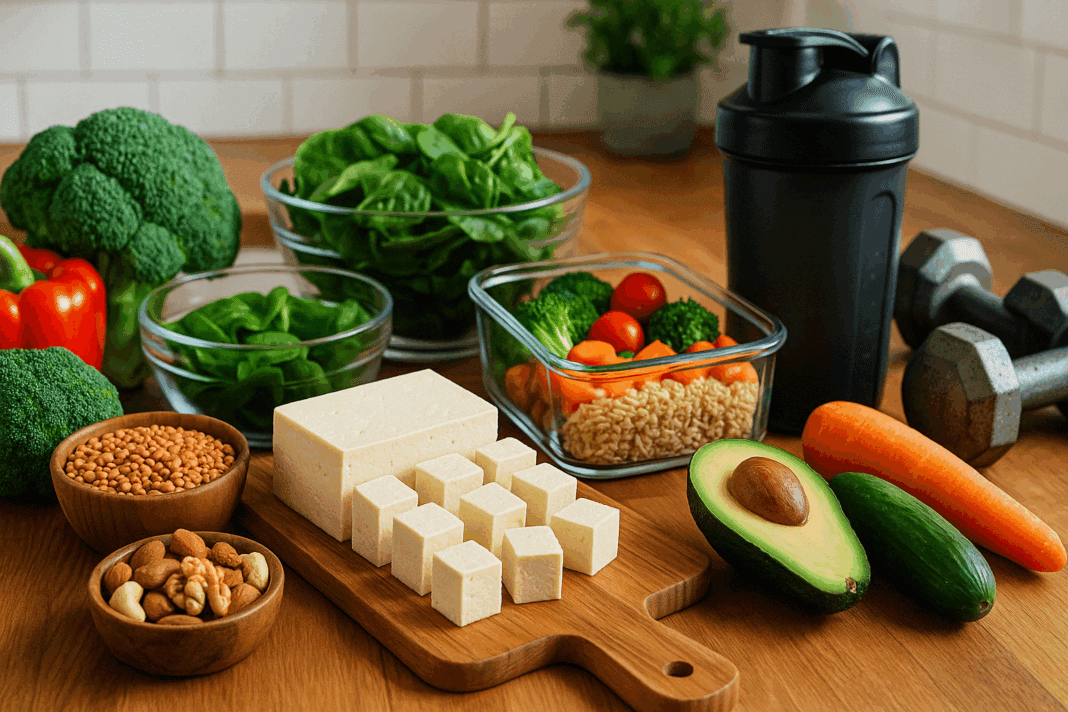Gaining muscle while simultaneously losing fat has long been considered a nutritional paradox. However, emerging evidence shows that with the right strategies, it’s not only possible but highly achievable. At the core of this transformation is understanding what to eat to build muscle and burn fat effectively, guided by principles of whole-food nutrition, metabolic science, and personalized eating patterns. A thoughtfully crafted fat loss muscle gain nutrition plan does more than just alter your physique—it can dramatically improve your energy, metabolism, and long-term health.
You may also like: Smart Meal Prep for Weight Loss: Expert-Approved Lunch Ideas and Recipes to Stay on Track
Understanding the Science of Muscle Gain and Fat Loss
Before we explore specific foods and eating schedules, it’s essential to understand the physiological mechanisms behind building muscle and burning fat. Muscle growth, or hypertrophy, is stimulated by resistance training and fueled by adequate protein intake and caloric support. Conversely, fat loss requires a calorie deficit—but not at the expense of muscle mass. The key lies in creating a modest deficit while strategically fueling workouts and recovery with nutrient-dense foods.
Protein synthesis must outweigh protein breakdown for muscle growth to occur, which makes dietary protein vital. Simultaneously, leveraging the thermic effect of food, particularly protein, can support fat burning. This interplay between macros—proteins, carbohydrates, and fats—along with meal timing, forms the foundation of an optimized muscle building diet that also encourages fat loss.
What to Eat to Gain Muscle While Losing Fat
When considering what to eat to gain muscle and lose fat, nutrient quality is as important as quantity. Lean protein sources such as lentils, tempeh, tofu, edamame, and seitan offer the essential amino acids needed for muscle repair and growth, especially when consumed in strategic combinations. Whole plant-based proteins should be paired with legumes, grains, or seeds to ensure a full amino acid profile.
Carbohydrates also play a key role in muscle building. Despite the rise in popularity of s keto low carb diets, carbohydrates remain the body’s preferred energy source, particularly during strength training. The distinction between the ketogenic diet vs low carb approaches is significant: the former aims for ketosis through extremely low carbohydrate intake, while the latter simply reduces carbs to moderate levels without inducing ketosis. It’s crucial to understand this distinction when deciding if a low carb diet keto diet fusion is right for you, especially considering the demands of muscle repair and glycogen replenishment.
Fats are essential too, particularly in hormonal regulation. Avocados, nuts, seeds, and olive oil contribute healthy fats that support muscle recovery and overall metabolic function. Contrary to misconceptions about fat consumption, including fats in your diet does not equate to fat gain—especially when consumed as part of a burn fat build muscle diet plan.
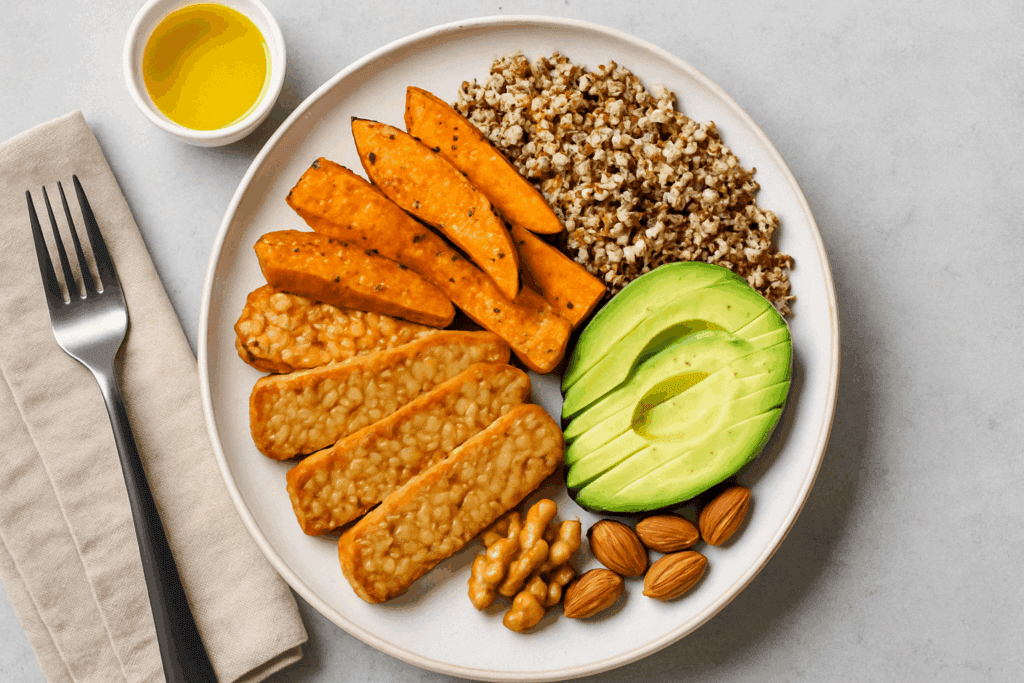
Meal Timing and Frequency: What to Eat and When to Eat to Build Muscle
Strategic meal timing can enhance both muscle growth and fat loss. Eating every three to four hours helps stabilize blood sugar levels and maintains an anabolic environment. Pre- and post-workout nutrition are particularly important. Understanding what should people eat for a workout to build muscle can make a major difference in performance and recovery.
Before a workout, opt for a light meal that includes slow-digesting carbs and protein, such as oatmeal with chia seeds or a banana with peanut butter and plant-based protein. After training, prioritize quick-digesting carbs and complete proteins—think a smoothie with almond milk, berries, and vegan protein powder. This nutrient timing approach supports muscle protein synthesis and replenishes glycogen stores.
A well-structured eating schedule for gaining muscle may include three main meals and two to three snacks, each balanced with protein, complex carbohydrates, and healthy fats. This layout ensures consistent fuel and muscle support throughout the day.
7 Day Meal Plan to Gain Muscle Mass and Burn Fat
A 7 day muscle building meal plan does not have to be complex or overwhelming. The goal is to balance macronutrients in each meal, focusing on whole, minimally processed ingredients. Here’s a sample breakdown of a muscle gain diet plan 7 days in duration, emphasizing foods that support both hypertrophy and body composition improvements:
- Day 1: Breakfast – Scrambled tofu with spinach, nutritional yeast, and sweet potatoes. Lunch – Quinoa salad with chickpeas, olive oil, and roasted vegetables. Dinner – Lentil curry with brown rice. Snacks – Protein smoothie with banana and flaxseeds; hummus with carrots.
- Day 2: Breakfast – Overnight oats with almond butter and blueberries. Lunch – Black bean and corn tacos with avocado. Dinner – Tempeh stir-fry with broccoli and buckwheat noodles. Snacks – Edamame pods; chia pudding with almond milk.
- Day 3: Breakfast – Smoothie bowl with vegan protein, spinach, mango, and walnuts. Lunch – Lentil and sweet potato stew. Dinner – Grilled seitan with quinoa and arugula salad. Snacks – Trail mix with pumpkin seeds; roasted chickpeas.
- Day 4: Breakfast – Whole grain toast with mashed avocado and hemp seeds. Lunch – Thai peanut tofu with brown rice and veggies. Dinner – Eggplant and chickpea tagine. Snacks – Coconut yogurt with granola; fresh fruit with almond butter.
- Day 5: Breakfast – Buckwheat pancakes with almond yogurt and berries. Lunch – Barley and bean bowl with kale and tahini dressing. Dinner – Zucchini noodles with tomato-lentil sauce. Snacks – Protein bar (plant-based); air-popped popcorn with nutritional yeast.
- Day 6: Breakfast – Chia and oat porridge with sliced banana and cinnamon. Lunch – Grilled veggie sandwich with hummus on sprouted bread. Dinner – Baked tofu with roasted carrots and farro. Snacks – Apple slices with sunflower seed butter; edamame dip with whole grain crackers.
- Day 7: Breakfast – Green smoothie with spinach, pineapple, and vegan protein. Lunch – Lentil loaf with mashed cauliflower. Dinner – Chickpea pasta with sautéed mushrooms and spinach. Snacks – Almonds with dark chocolate; kefir alternative with berries.
This 7 day meal plan for muscle gain emphasizes variety and includes easy recipes to help build muscle without relying on animal products. It provides sufficient calories, protein, and micronutrients to fuel performance and recovery.
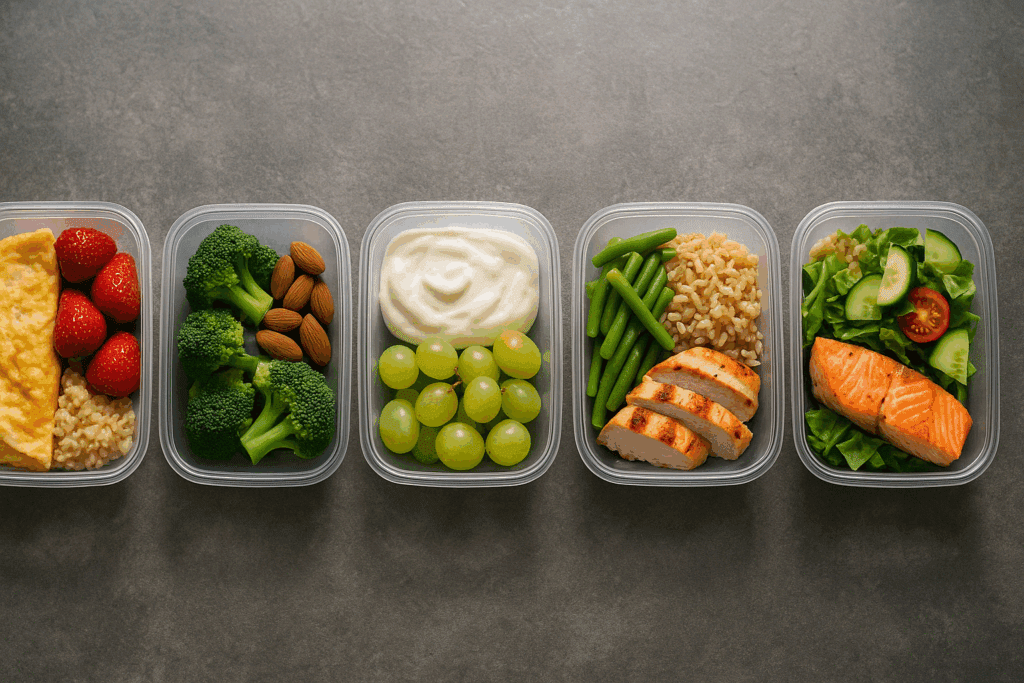
Navigating Popular Diet Trends: Keto Diet vs Low Carb for Muscle Building
The rising popularity of low-carb eating patterns prompts a critical question: is keto a good diet for those aiming to build muscle and lose fat? The ketogenic diet—characterized by high fat, moderate protein, and very low carbohydrate intake—can promote fat loss by inducing a state of ketosis. However, this metabolic state is not optimal for muscle building in many individuals.
When comparing the ketogenic diet vs low carb diets, it’s important to recognize that a strict keto regimen may limit exercise performance and muscle recovery due to restricted glycogen availability. In contrast, a low carb approach, where carbohydrates are reduced but not eliminated, offers greater flexibility and better supports resistance training needs.
Understanding the nuances of keto diet vs low carb diet strategies enables more informed choices. While a ketogenic plan might suit some metabolic types, it’s not universally ideal. For those seeking muscle growth, a moderate intake of complex carbohydrates is typically more sustainable and effective. Additionally, the question “is a keto diet sustainable” remains open-ended, as many find long-term adherence challenging.
Whole-Food Plant-Based Nutrition vs Keto: A Science-Based Perspective
There is a growing body of evidence supporting whole-food plant-based diets as not only compatible with muscle building, but often superior in supporting overall health. Compared to s keto low carb plans, a plant-forward strategy provides more fiber, antioxidants, and anti-inflammatory compounds, which contribute to recovery and hormonal balance.
While some plant-based athletes may experiment with is keto no carbs approaches, this often requires significant supplementation and meal planning. Most find greater long-term success with balanced, diverse plant-based meals. The fiber and phytonutrient density of whole foods like legumes, leafy greens, tubers, and grains support both the digestive system and metabolic function—factors crucial when pursuing a lose fat gain muscle diet plan.
The key distinction lies in sustainability and nutrient diversity. While the low carb diet keto diet model emphasizes macronutrient manipulation, whole-food eating focuses on food quality, which research increasingly links to better health outcomes. Thus, for many, the path to body recomposition lies not in extreme carb restriction, but in consistent, nourishing eating habits rooted in plants.
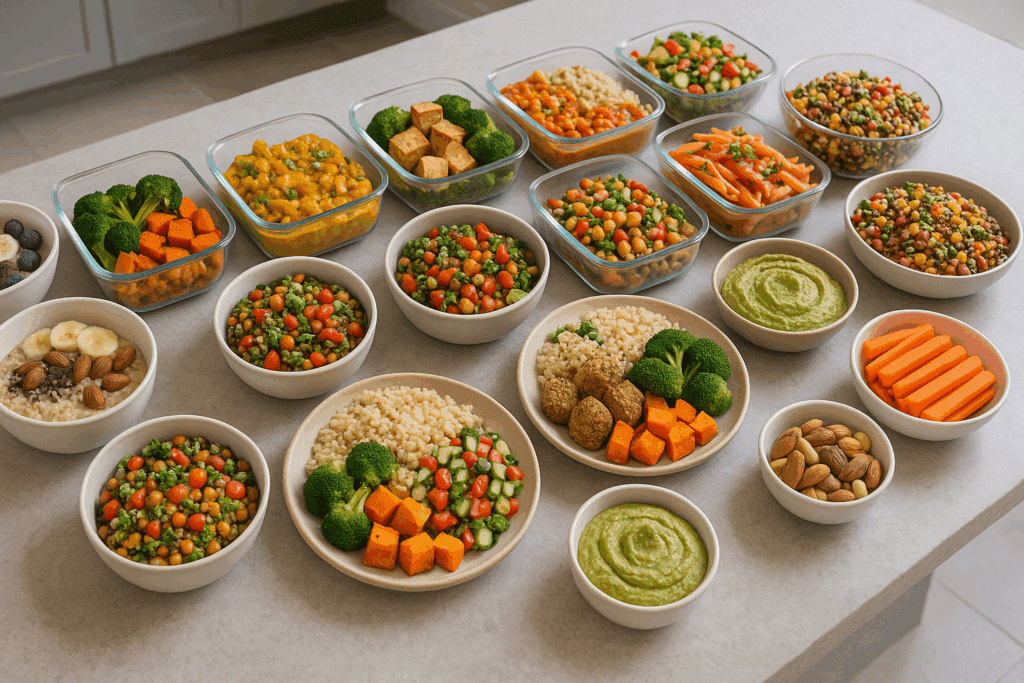
The Role of Macronutrients and Supplements in a Bodybuilding Diet Plan
Creating an effective bodybuilding meal plan requires close attention to macronutrient ratios and nutrient timing. Protein remains the cornerstone, with intake ideally spaced throughout the day. Most individuals aiming to build muscle should consume between 1.6 and 2.2 grams of protein per kilogram of body weight per day.
Carbohydrates are equally important. While some followers of s keto low carb strategies argue that carbs hinder fat loss, they are in fact essential for optimal training intensity and recovery. The best bodybuilding diet plan doesn’t fear carbs—it uses them wisely, timing them around workouts to enhance performance and fuel muscle repair.
Supplementation can support, but not replace, a strong nutritional foundation. Plant-based protein powders, creatine monohydrate, and branched-chain amino acids (BCAAs) are among the most evidence-backed supplements for muscle growth. However, real food should remain the focus.
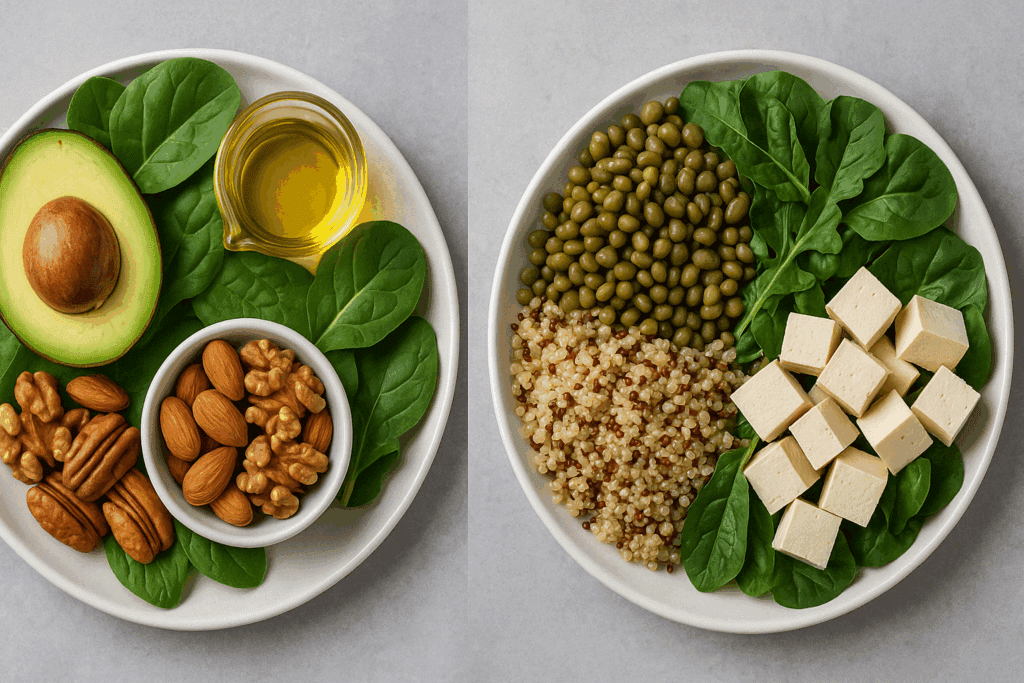
How to Eat for Muscle Growth: Lifestyle and Mindset Factors
Nutrition does not exist in isolation. Lifestyle factors such as sleep, stress management, hydration, and mindset dramatically affect your ability to build muscle and lose fat. Even the most precisely designed meal plan for muscle gain will fall short if recovery and hormonal balance are compromised.
Mindful eating practices—such as slowing down during meals, paying attention to hunger and fullness cues, and savoring flavors—can enhance digestion and improve nutrient absorption. Integrating a lose fat gain muscle eating plan with mindful habits turns nutrition into a holistic self-care ritual.
Consistency is ultimately more important than perfection. Rather than fixating on rigid rules, focus on forming habits that align with your long-term goals. Whether you’re following a 7 day meal plan to gain muscle mass or exploring what do bodybuilders eat to fuel elite performance, the principle remains the same: quality, balance, and intention.
.
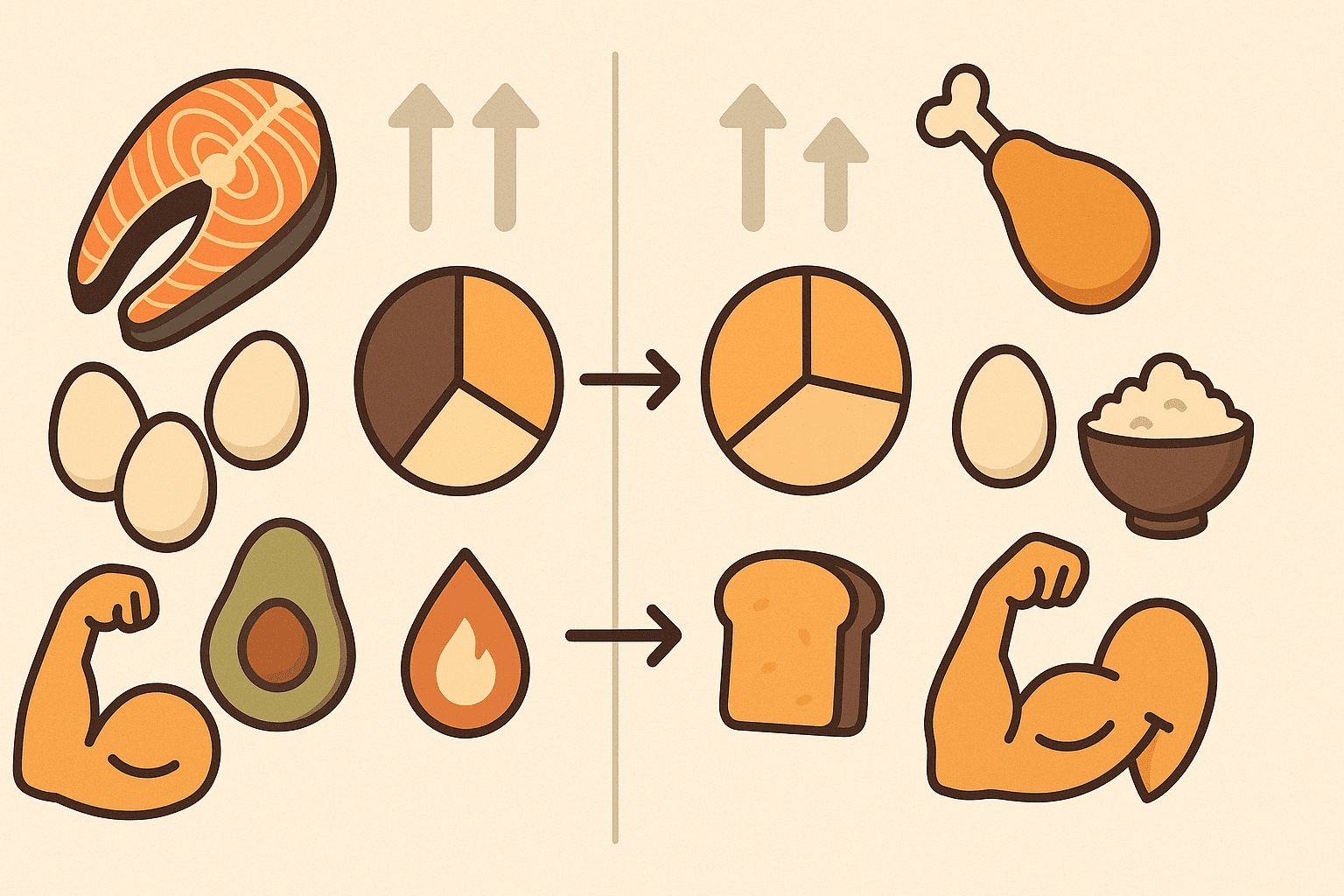
Frequently Asked Questions (FAQ): What to Eat to Build Muscle and Burn Fat
1. Can I follow a fat loss muscle gain nutrition plan without counting calorie
Yes, it’s entirely possible to follow a fat loss muscle gain nutrition plan without obsessively counting every calorie. Instead, focus on intuitive eating and portion awareness using whole foods with high nutrient density. Prioritize balanced meals with lean proteins, complex carbs, and healthy fats—these naturally regulate appetite and satiety. While tracking may be useful during initial phases, developing awareness of what to eat to gain muscle and how your body responds to different foods can yield sustainable results without constant logging. Many people find success by adhering to an easy-to-follow 7 day meal plan for muscle gain that emphasizes consistency over perfection.
2. What are some easy recipes to help build muscle that don’t require fancy equipment or expensive ingredients?
Muscle-building meals can be incredibly simple. For example, a chickpea and sweet potato hash sautéed in olive oil with garlic is a great post-workout meal that supports a bodybuilding meal plan. Another quick recipe is lentil stew with kale and quinoa—rich in protein and fiber. Even a blended smoothie using almond milk, banana, spinach, and hemp protein can fit perfectly into an easy meal plan for muscle gain. The key is choosing what food you need to make muscle without overcomplicating your kitchen routine. You don’t need to be a gourmet chef to follow a practical fat loss muscle gain nutrition plan at home.
3. How does meal timing affect what to eat when to eat to build muscle efficiently?
Meal timing plays a crucial role in a muscle gain diet plan, especially for those looking to optimizeperformance and recovery. Consuming protein-rich meals or snacks every 3–4 hours can maintain a steady anabolic state. A balanced pre-workout meal with protein and complex carbohydrates improves training energy and performance. Post-workout, fast-digesting carbs with protein—like a fruit and vegan protein shake—are ideal for recovery. Understanding what to eat and when to eat to gain muscle helps structure your day effectively, ensuring your efforts in the gym translate into gains.
4. How do I adapt a bodybuilding diet plan to a vegetarian or vegan lifestyle?
Plant-based bodybuilding is not only possible—it can be highly effective. Focus on pairingcomplementary proteins, such as rice and beans, to ensure a complete amino acid profile. Legumes, tofu, tempeh, and seitan should be central to your bodybuilding diet plan, supplemented by nuts and seeds for added calories and micronutrients. With proper planning, you can create a muscle building diet rich in iron, zinc, and B12 by combining fortified foods and smart supplementation. Many athletes follow a 7 day meal plan to gain muscle mass using only plant-based foods and achieve significant strength improvements.
5. What are the psychological benefits of following a structured meal plan for muscle gain?
Beyond the physical, a structured meal plan for muscle gain fosters a sense of control, self-discipline,and purpose. Following a clear eating schedule for gaining muscle creates routine and stability, reducing decision fatigue and food anxiety. It can also improve confidence and body image as you track strength improvements and physical changes. Furthermore, engaging in the intentional act of fueling your body with what to eat to build muscle can serve as a daily reminder of your broader health goals. The routine becomes an anchor point for positive behavioral reinforcement and long-term adherence.
6. How can I stay consistent with a muscle building diet while traveling or eating out?
Eating out doesn’t have to derail your goals if you approach it with intention. Look for menu items thatprioritize lean protein and fiber—think lentil salads, tofu stir-fries, or bean-based soups. Portable snacks like trail mix, protein bars, or roasted chickpeas help bridge gaps between meals. When dining out, ask for simple modifications such as extra veggies or swapping white rice for quinoa. Remember, the core of a bodybuilder diet isn’t perfection but consistency—choose meals that align with what to eat to grow muscle while accommodating your lifestyle.
7. What should people eat for a workout to build muscle if they train early in the morning?
If you train first thing in the morning, a light pre-workout meal or snack can make a big difference inenergy and output. A slice of whole grain toast with almond butter or a banana with plant-based protein provides quick fuel without causing digestive distress. Post-workout, prioritize a full breakfast with carbs and protein—like oatmeal with protein powder and berries—to support muscle repair. Timing your nutrition around morning workouts helps you align with the principles of what to eat while gaining muscle and reinforces a strong metabolic start to your day. A consistent eating schedule for gaining muscle includes strategic pre- and post-workout meals, especially for early risers.
8. How do I personalize a 7 day muscle building meal plan if I have a fast metabolism or high caloric needs?
If you burn calories quickly, you’ll need to scale your 7 day muscle building meal plan to include moreenergy-dense foods. Avocados, nut butters, dried fruits, and whole grains can help you reach your targets without overeating. Add extra olive oil to meals, double your portion of legumes, or include a second smoothie during the day. Adjusting your bodybuilder diet to match your metabolism ensures you’re eating enough to support muscle synthesis. Understanding what to eat to increase muscle also means identifying your body’s unique demands and adapting your intake accordingly.
9. What’s the difference between what do bodybuilders eat and what everyday fitness enthusiasts should focus on?
While elite bodybuilders often follow strict macros and meticulously timed meals, the average gymgoer can achieve great results with a more flexible approach. The core principles of what to eat to get muscles still apply—adequate protein, nutrient timing, and whole foods—but without the extremes of competitive dieting. Instead of obsessing over every gram, aim for consistency with your lose fat gain muscle diet plan. A sustainable muscle gain diet plan 7 days a week should prioritize real food, smart portions, and enjoyable meals. It’s more about finding balance than mimicking professional regimens.
10. How long does it typically take to see results from a burn fat build muscle diet plan?
Results depend on numerous factors: training consistency, sleep, stress, and adherence to yournutrition strategy. Generally, you might notice strength improvements within a few weeks, with visible muscle gain and fat loss becoming apparent after 8–12 weeks of dedicated effort. A well-executed lose fat gain muscle eating plan doesn’t promise instant transformation but offers sustainable progress over time. Be patient and trust the process, using a 7 day meal plan for muscle gain as a building block for long-term success. When you consistently align your meals with what to eat to gain muscle mass and combine that with smart training, results will follow.
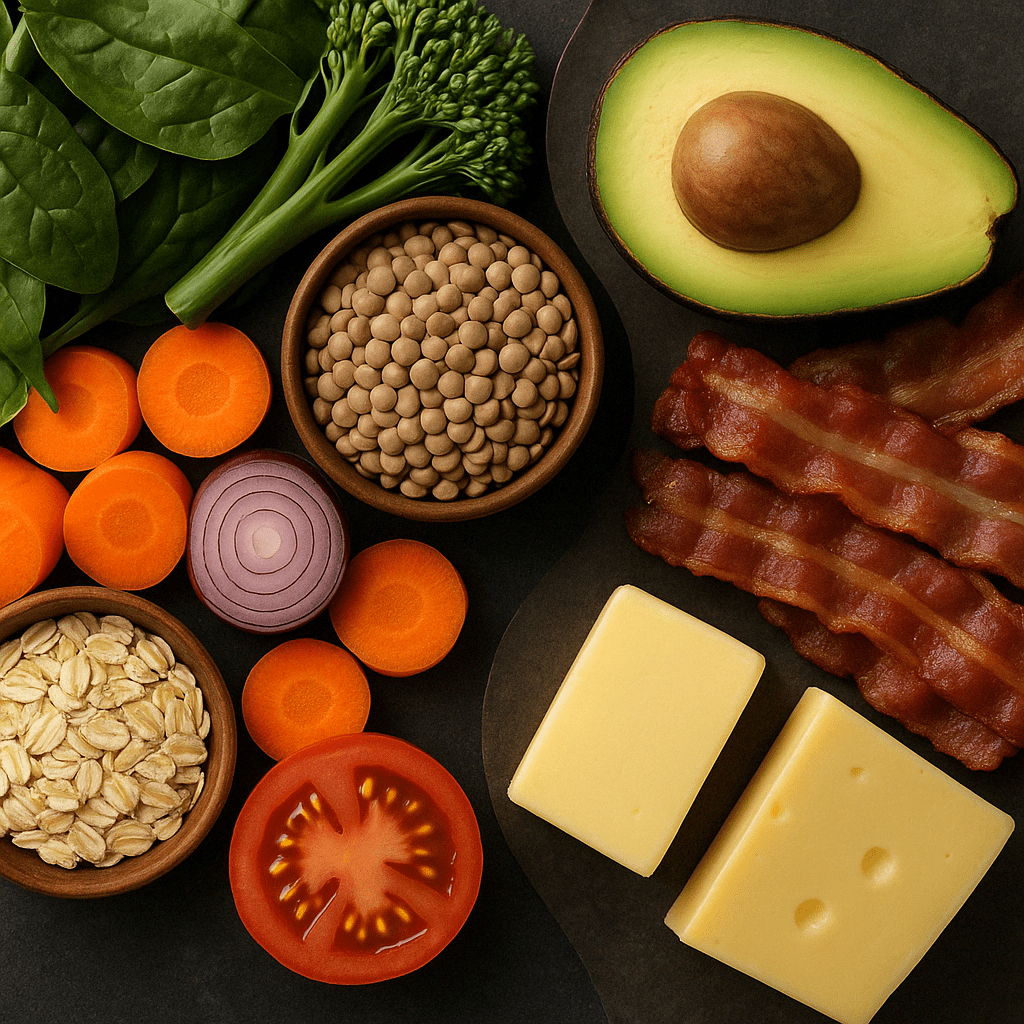
Conclusion: Fueling Strength and Fat Loss with Purpose and Precision
Understanding what to eat to grow muscle while reducing body fat doesn’t require extreme restriction or unsustainable trends. It requires intention, education, and a science-backed approach to fueling your body. By choosing nutrient-dense whole foods, timing your meals thoughtfully, and building a realistic muscle gain diet plan 7 days at a time, you can make steady progress toward your goals.
While debates like ketogenic diet vs low carb continue to shape dietary discourse, the real power lies in understanding how your body responds to food. Ask yourself: is keto a low carb diet that serves your needs? Or would a balanced, plant-based eating pattern provide more energy and sustainability? There is no one-size-fits-all answer—but the evidence increasingly points toward moderation, variety, and consistency as the keys to lasting transformation.
Whether you’re exploring what food do you need to make muscle or evaluating what to eat lose weight gain muscle, remember that the most successful approach is one that you can maintain—and enjoy. Through mindful choices and a commitment to nourishment, you can build strength, shed fat, and fuel your best self, one powerful meal at a time.
Was this article helpful? Don’t let it stop with you. Share it right now with someone who needs to see it—whether it’s a friend, a colleague, or your whole network. And if staying ahead on this topic matters to you, subscribe to this publication for the most up-to-date information. You’ll get the latest insights delivered straight to you—no searching, no missing out.
Further Reading:
What to Eat and Avoid If You’re Trying to Build Muscle
Create Your Own Meal Plan for Muscle Gain and Fat Loss
How to Lose Fat and Gain Muscle: It Starts With Diet
Disclaimer
The information contained in this article is provided for general informational purposes only and is not intended to serve as medical, legal, or professional advice. While NewsHealthWatch strives to present accurate, up-to-date, and reliable content, no warranty or guarantee, expressed or implied, is made regarding the completeness, accuracy, or adequacy of the information provided. Readers are strongly advised to seek the guidance of a qualified healthcare provider or other relevant professionals before acting on any information contained in this article. NewsHealthWatch, its authors, editors, and contributors expressly disclaim any liability for any damages, losses, or consequences arising directly or indirectly from the use, interpretation, or reliance on any information presented herein. The views and opinions expressed in this article are those of the author(s) and do not necessarily reflect the official policies or positions of NewsHealthWatch.

